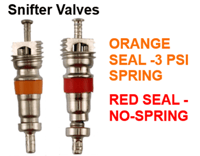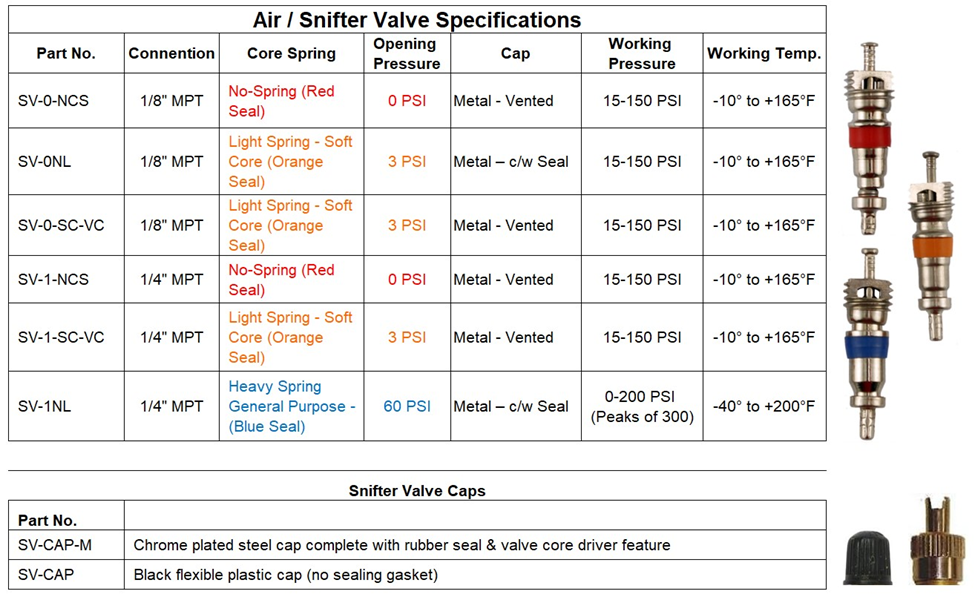What is an Air Valve vs. a Snifter Valve?
What is an Air Valve vs. a Snifter Valve?
The terminology on air vs. snifter valves is confusing! They are also commonly referred to as "Schrader” valves. A Schrader valve is most often thought of as a tire valve. “Schrader” is a brand name, and they produce all kinds of air valves including both air and snifter valves. In general terms both are air valves.

The difference between a Snifter and an Air (a.k.a. Tank Valve) is the application and type of spring that is installed!
Snifter Valves
 Snifter valve terminology is typically used to describe an air valve with either a very weak (3 psi) valve core spring or a valve core with no spring at all. They are used in shallow well pump systems to allow air to be sucked in through the valve to recharge a Shallow Well Air Volume Control (AVC).
Snifter valve terminology is typically used to describe an air valve with either a very weak (3 psi) valve core spring or a valve core with no spring at all. They are used in shallow well pump systems to allow air to be sucked in through the valve to recharge a Shallow Well Air Volume Control (AVC).
https://support.boshart.com/shallow-well-air-volume-controls
They are also used to allow air into a bleeder type air charging system in deep well applications in which a hydropneumatics (galvanized) pressure tank is used in conjunction with a deep well air volume control.
https://support.boshart.com/deep-well-air-volume-controls-avc-a.k.a.-air-release-valves
Air Valves
 Air valves are manufactured with strong (60 psi) springs and are most often referred to as “Air” or “Tank” valves. They are installed to allow the homeowner or service technician to add air using an air compressor to a hydro pneumatic tank to correct a waterlogged tank situation.
Air valves are manufactured with strong (60 psi) springs and are most often referred to as “Air” or “Tank” valves. They are installed to allow the homeowner or service technician to add air using an air compressor to a hydro pneumatic tank to correct a waterlogged tank situation.
https://support.boshart.com/how-can-i-tell-if-my-pressure-tank-is-waterlogged

Your pressure system may have either of the two basic types of pressure tanks which are "HYDRO PNEUMATIC" (a.k.a. Atmospheric Tank) or "CAPTIVE AIR” (a.k.a. Pre-Charged, Diaphragm or Bladder tank). Snifter valves, bleeders, & air volume controls are ONLY used on pumping systems with "Hydro Pneumatic" tanks!
Pre-Charged tanks will have an air valve that is built into the top dome of the tank for adjusting the internal tank pressure, however pre-charged tanks do not need to have air injected into them with each pump cycle and this is why they do not use the above-mentioned components.
